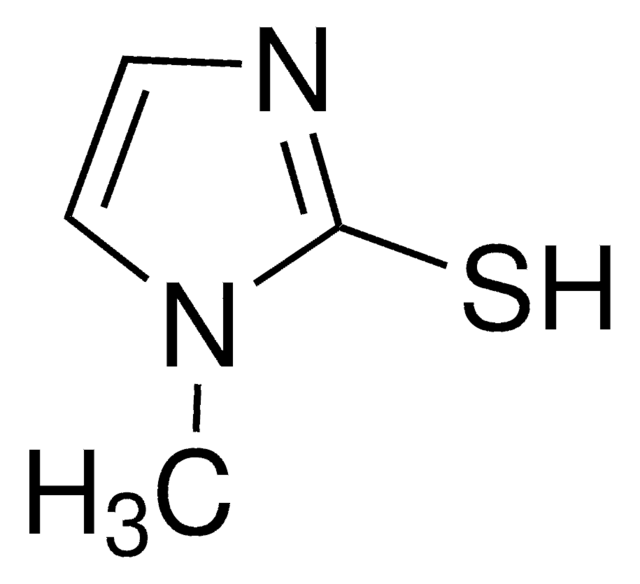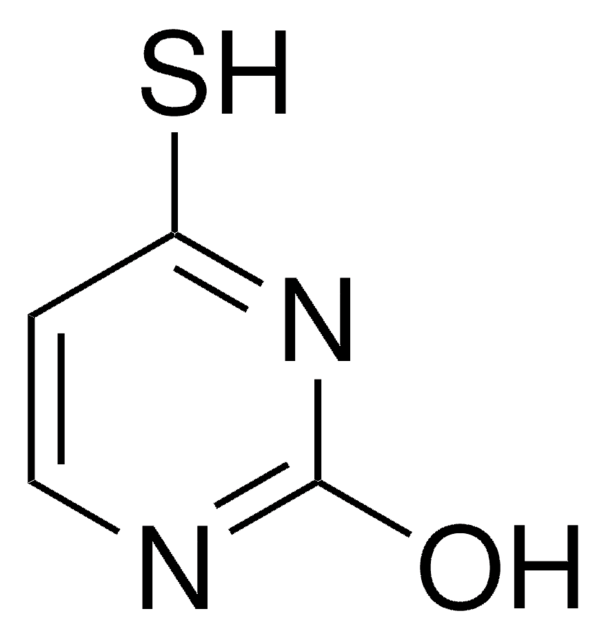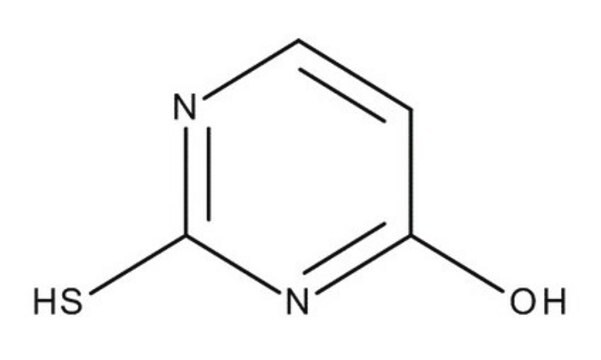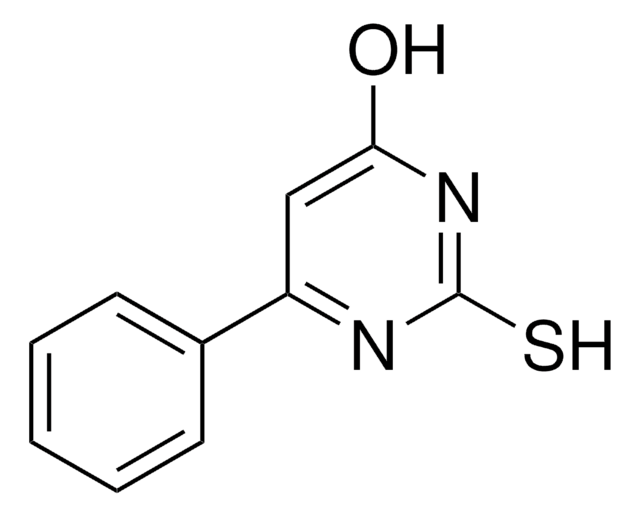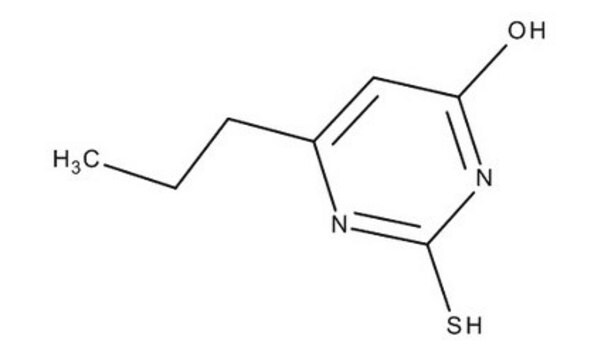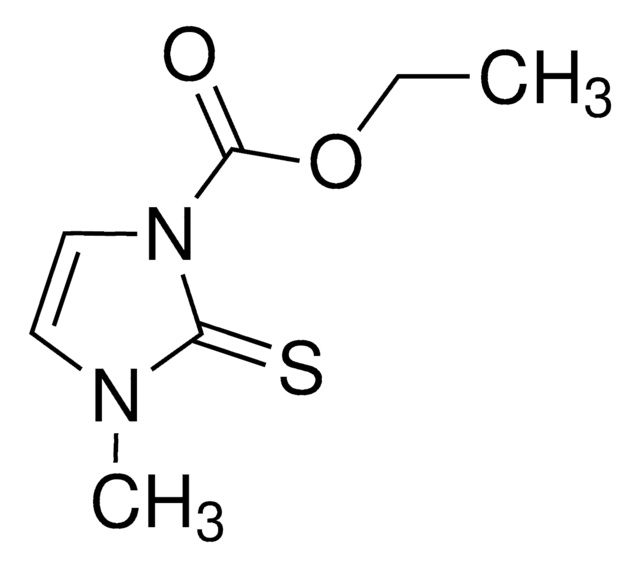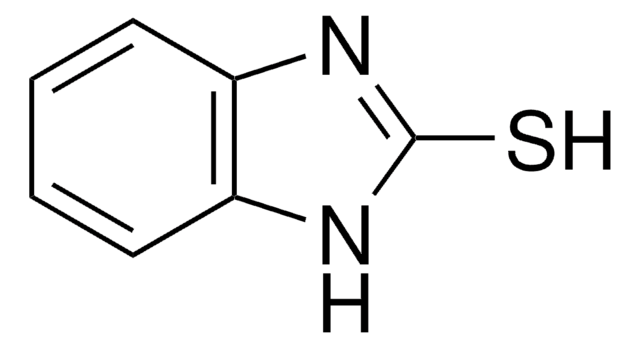T7750
2-Thiouracil
≥99%
Synonym(s):
(2-thioxo -2, 3-dihydropyrimidin-4(1H)-one), 2TU, 4-Hydroxy-2-mercaptopyrimidine
About This Item
Recommended Products
biological source
synthetic
Assay
≥99%
form
powder
mp
>300 °C (lit.)
solubility
1 M NaOH: 5 mg/mL, clear to very slightly hazy
1 M NaOH: 50 mg/mL, colorless to faintly yellow
SMILES string
O=C1NC(=S)NC=C1
InChI
1S/C4H4N2OS/c7-3-1-2-5-4(8)6-3/h1-2H,(H2,5,6,7,8)
InChI key
ZEMGGZBWXRYJHK-UHFFFAOYSA-N
Looking for similar products? Visit Product Comparison Guide
General description
Application
- in the synthesis and characterization of silver colloid and film substrates and their applications in surface-enhanced Raman scattering (SERS)
- to study its electro-oxidation and determination at titanium dioxide (TiO2) nanoparticles-modified gold electrode
- to study the effect of methylation on the deactivation mechanism or the triplet-state dynamics of 2-thiouracil using time-resolved photoelectron spectroscopy
Biochem/physiol Actions
Signal Word
Warning
Hazard Statements
Precautionary Statements
Hazard Classifications
Carc. 2
Storage Class Code
11 - Combustible Solids
WGK
WGK 3
Personal Protective Equipment
Certificates of Analysis (COA)
Search for Certificates of Analysis (COA) by entering the products Lot/Batch Number. Lot and Batch Numbers can be found on a product’s label following the words ‘Lot’ or ‘Batch’.
Already Own This Product?
Find documentation for the products that you have recently purchased in the Document Library.
Customers Also Viewed
Our team of scientists has experience in all areas of research including Life Science, Material Science, Chemical Synthesis, Chromatography, Analytical and many others.
Contact Technical Service